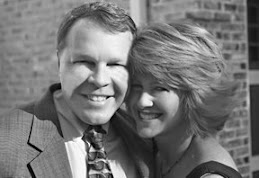Sometimes when you travel it is important that you do things
you don’t necessarily want to do.
Terezin is one of those things.
You see, Terezin is a concentration camp.
Originally built in the 1700's as a fortress to keep out the Prussians, the compound was later repurposed by the Nazis to keep the Jews in.Terezin is both a town and a camp. The Nazis moved out the original 7,000 town residents and replaced them with 60,000 Jews into what they termed a “resettlement area.” To keep the settlers content, when they took neighbors away to the fortress to be transported to extermination camps, the overseers told them they were going off to visit other family members and shared “stories” of other friends that were waiting for them. This town was an important tool for the Nazis in early days, serving as their model Jewish town and was used for propaganda purposes. They even produced a video, The Fuhrer Gives a City to the Jews, laden with happy settlers enjoying soccer, sewing and concerts.
How the viewers could miss the haunting stares of the residents is beyond me. Similarly, the nearby camp was prepared for an imminent Red Cross inspection with a carefully planned tour, new paint, and improved bathroom facilities (the sinks, installed just for show, didn’t even have working plumbing.) Camp residents were forced to build railroad tracks ostensibly for supplies, but really used to move prisoners on to Auschwitz without attracting the attention of the townsfolk. Sadly, the site passed the brief Red Cross inspection.
 |
| Terezin Crematorium |
Originally built in the 1700's as a fortress to keep out the Prussians, the compound was later repurposed by the Nazis to keep the Jews in.Terezin is both a town and a camp. The Nazis moved out the original 7,000 town residents and replaced them with 60,000 Jews into what they termed a “resettlement area.” To keep the settlers content, when they took neighbors away to the fortress to be transported to extermination camps, the overseers told them they were going off to visit other family members and shared “stories” of other friends that were waiting for them. This town was an important tool for the Nazis in early days, serving as their model Jewish town and was used for propaganda purposes. They even produced a video, The Fuhrer Gives a City to the Jews, laden with happy settlers enjoying soccer, sewing and concerts.
How the viewers could miss the haunting stares of the residents is beyond me. Similarly, the nearby camp was prepared for an imminent Red Cross inspection with a carefully planned tour, new paint, and improved bathroom facilities (the sinks, installed just for show, didn’t even have working plumbing.) Camp residents were forced to build railroad tracks ostensibly for supplies, but really used to move prisoners on to Auschwitz without attracting the attention of the townsfolk. Sadly, the site passed the brief Red Cross inspection.
Although over 300 Jews were hanged or shot at the camp, the
dire conditions in both the overcrowded town and camp were the real enemy. Disease was rampant, sanitation lacking, and
medical care unavailable. Of the 155,000
that passed through the facilities, over 35,000 succumbed from the
conditions. Fewer than 100 of the 15,000
children in the camp survived. Others
were shipped east to the extermination camps for the Fuhrer’s final solution.
For me, a particularly difficult sight to see was the crematorium
and cemetery. In the earliest days, at
one end of the cemetery, the dead were buried side-by-side with small
gravestones. As time progressed, each
site held 20 or more remains with a small stone marker.
Finally, one end of the field remains bare as they gave up marking
remains buried en masse in huge pits. The
crematorium still holds the scent of the oil used to run the ovens. Sadly they had turned the process into quite
a production line and ran around the clock to meet the burgeoning needs of the
camp.
Throughout our visit I couldn’t help but think of the quote by
Martin Niemoeller featured at the Holocaust Museum in Washington:
“First they came
for the Communists but I was not a Communist so I did not speak out. Then they
came for the Socialists and the Trade Unionists but I was not one of them, so I
did not speak out. Then they came for the Jews but I was not Jewish so I did
not speak out. And when they came for me, there was no one left to speak out
for me.” 
No comments:
Post a Comment